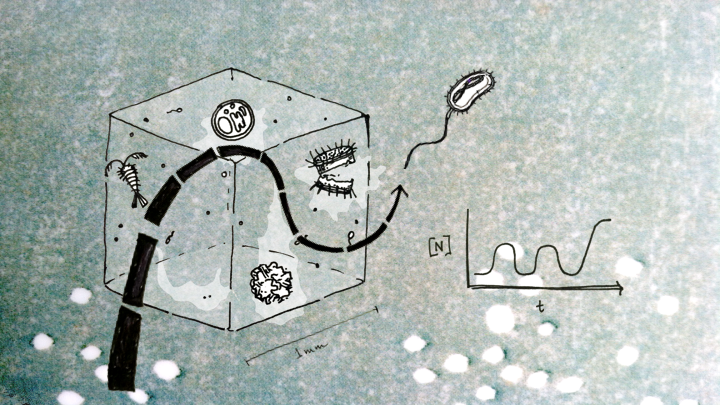Bacterial growth in fluctuating nutrient environments
Written By
Category
Research
Posted On
June 1, 2012
Share This

Heterotrophic bacteria depend on the abundance of organic carbon. How they use this carbon, for growth or for energy, affects the balance between what remains as organic carbon and what is mineralized into CO2 – and the cycle of carbon on Earth. To understand how such small creatures control global-scale processes, we use a combination of microfluidics and microscopy to observe the behavior of individual bacteria, in real time as they grow and interact with their microscale environments. Specifically, we built a microfluidic device that generates controlled nutrient fluctuations, with frequencies ranging from seconds to tens of minutes. With such a device, we can mimic the heterogeneous distribution and concentration of nutrients available to aquatic bacteria in nature. Accounting for this microscopic heterogeneity opens several key questions regarding how bacteria interact with their environments: at what timescales do environmental fluctuations affect bacterial behavior and growth? To what features (e.g. magnitude, frequency, duration) of these fluctuations do bacteria respond? How are these responses and response times indicative of bacterial roles in the ecosystem? Already, we have observed distinct swimming and surface-attachment behaviors in response to minute-scale nutrient fluctuations. Thus, bacteria not only respond to rapid fluctuations, but do so in ways that likely affect their growth and physiology. We are now focused on understanding bacterial growth within fluctuating environments, with the ultimate goal of connecting microscopic behaviors to a larger understanding of our planet.
For more information, please contact Jen Nguyen (nguyenje@ethz.ch) or Vicente Fernandez (fernandez@ifu.baug.ethz.ch).